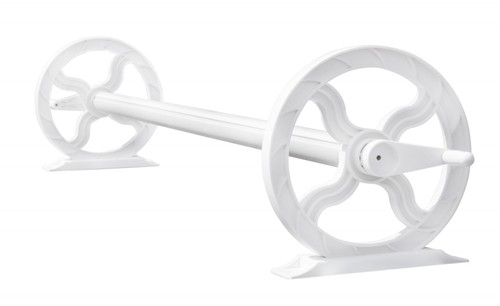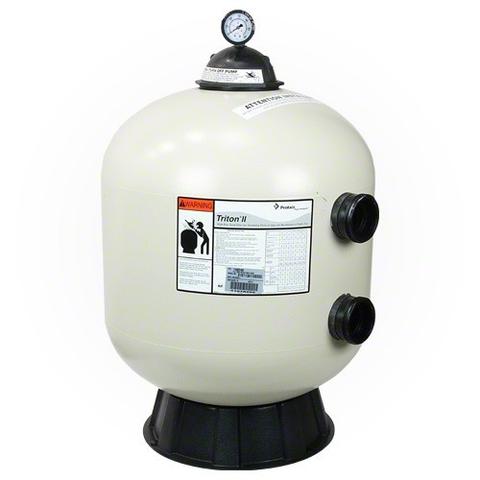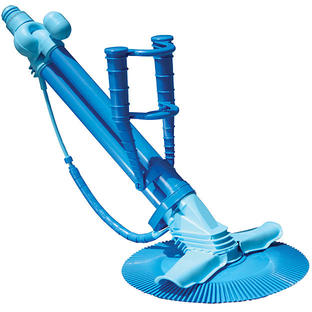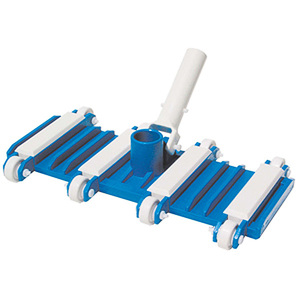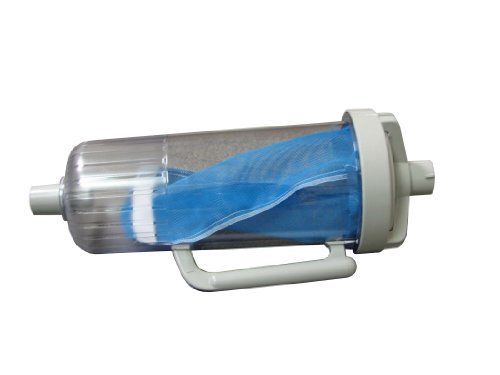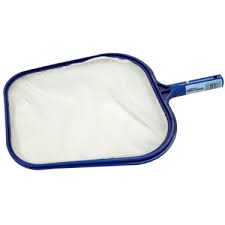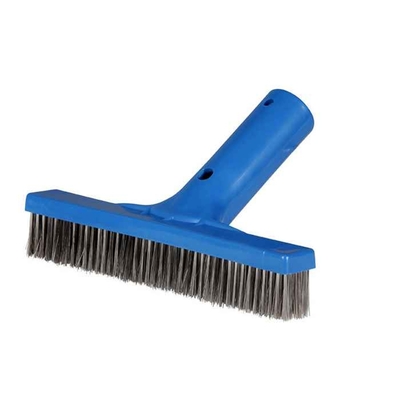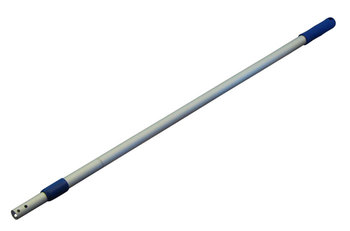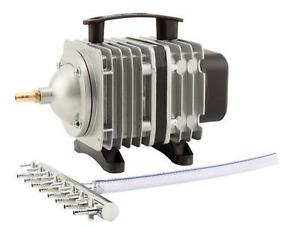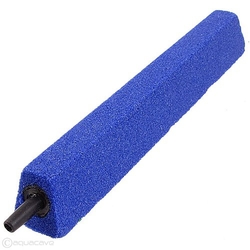A Pool Care Scenario
John Denker
* Contents
1 Preliminary Remarks
In my experience, when a pool is in good shape, keeping it in good
shape is reasonably easy. However, if something goes wrong, it can be
quite hard to figure out what went wrong, and hard to get things back
under control.
2 CYA – Cyanuric Acid i.e. Stabilizer
2.1 Excess CYA is a Disaster
Beware! If you have been using tablets of stabilized chlorine for more than a
couple of months, you almost certainly have accumulated too much CYA
(cyanuric acid, aka stabilizer). You need some stabilizer in
any outdoor pool, to protect the chlorine from sunlight – but if you
have too much it defeats the purpose of the chlorine, and you wind up
with algae and pathogens in the water. See reference 1.
This is an extremely common problem.
The “trichlor” product (in tablet or powder form) is about half
chlorine and half stabilizer. “Dichlor” has an even larger
proportion of stabilizer. The chlorine naturally goes away after a
few days, but the stabilizer lasts essentially forever, and
accumulates. If you’ve been using stabilized chlorine for a year or
more, the CYA level is probably astronomical.
- A CYA level of 20 ppm is adequate, especially if the pool is
covered most of the time.
- Anywhere between 20 and 30 is just fine; 25 is a good aim point.
- 40 is too much, but tolerable.
- If the CYA is 100 ppm, you can get it down to 50 by draining the pool
halfway and refilling with fresh water.
- If the CYA is 300 ppm or more, you can plan on emptying the pool
completely are refilling with fresh water; see below for details.
There is no practical way to lower the CYA without discarding the
water. (It’s kinda sorta theoretically possible to get rid of CYA
while keeping the water, but not worth the trouble.) You have to
drain and refill the pool once, to get rid of the CYA, but you won’t
ever have to do that again, not for years and years, if you avoid
excessive CYA in the future.
Short-term recommendation: Grab a clean plastic jug, rinse it once in
pool water, then fill it with pool water and take it to the local pool
store. They probably have a machine that performs a water analysis
and prints a report. They will probably do this for you for free once
or twice a year.
They’re happy to give you a free report, because they use it as a tool
to get you to buy stuff. However, you should usually ignore
everything they say. Pool-store advice is not reliable. In
particular, if the CYA is high, you have to replace the water, and
nothing you buy is going to change that.
In the medium and longer term, you should get a test kit that allows
you to check the CYA level, using the melamine turbidity test. I
would not trust any other kind of test.
2.2 Scrub, Drain, and Refill
If you have excess CYA, one common symptom is an outbreak of mustard
algae and/or black spot algae attached to the surfaces of the pool.
Before draining the pool, brush it with a steel-bristle brush to knock
loose as much of this as you can. Then vacuum it up, discarding the
water as you go (rather than running it through the filter). This
means that the water you are removing serves some useful purpose.
As you are refilling the pool, when it is about 10% full, add enough
stabilized chlorine to chlorinate the entirely full pool, so that the
concentration is about 50 ppm, i.e. ten times higher than you would
want for swimming. Then do some more brushing, to kill whatever algae
is still clinging to the surface. You want to really clobber it with
concentrated chlorine. The 10x chlorine won’t do much harm to intact
skin, but you wouldn’t want to get it in your eyes or mouth, so be
careful. Soak all the pool toys in the 10x chlorinated water, to kill
whatever algae is clinging to them. Machine-wash all bathing suits,
using a good detergent and hot water.
After you are sure you have clobbered the algae, fill the pool the
rest of the way.
Chlorinate the new water using stabilized chlorine at first ... until
the level of stabilizer gets up to 25 or so. Thereafter chlorinate
the pool using unstablized chlorine.
3 Oxidizer
Lowes sells a carton containing two gallons of “chlorinating liquid”
for less than $7.00. It’s like ordinary chlorine bleach, only more
concentrated. Beware that this stuff has a very limited shelf life,
so buy the freshest stuff you can. Buy from some place has a high
turnover, not from the grocery store, where the stuff has probably
been sitting there so long that it has lost most of its potency. Don’t
buy more than a one-week supply, especially during the summer.
Remember, it is unstabilized. Store it in a cool, dark place.
Assuming you have some stabilized chlorine tablets lying around, just
keep them. They have a nice long shelf life. Whatever you have is
probably a lifetime supply, since you will use them only on special
occasions. The CYA level will very gradually drift down, due to water
splashing out of the pool if nothing else. If it starts getting too
low, use one of the stabilized tablets.
If you want to add a whole lot of stabilized chlorine quickly, e.g.
when filling a pool with fresh water, you can smash up the tablets, to
increase the surface area. Put a brick under water, put a tablet on
the brick, and whack it with another brick, or a hammer, or whatever.
Do this under water, because you really don’t want to breathe the
dust.
The point of the so-called “chlorinating” agent is that it serves as
an oxidizer. The fact that it contains chlorine is almost irrelevant.
To a first approximation, any oxidizing agent works as well as any
other. This includes
- Chlorine-based oxidizer: HOCl
- Bromine-based oxidizer: HOBr
- Peroxide: H2O2
- Ozone: O3
- et cetera.
In theory, at low enough pH, plain old molecular oxygen (O2) is a
sufficiently strong oxidizer. In practice, you don’t want to operate
your pool at such a low pH, but it’s not off by much.
CYA stabilizer protects the HOCl from being destroyed by sunlight, but
this protection comes at a price: The CYA makes the HOCl much less
aeffective as an oxidizer. See the chart in reference 1.
There exist instruments that will measure the oxidation-reduction
potential (ORP). If the ORP is less than 700 millivolts, the pool
does not have sufficient protection against pathogens. It doesn’t
matter how much of this-or-that chemical you have in the pool; if the
ORP is less than 700 millivolts you have a problem. For a public
pool, state regulators will close it instantly if they find the ORP is
below 700 millivolts.
A professional pool service technician should have an ORP meter and
should know how to use it. For the generic homeowner I don’t know
what to recommend, because ORP meters are somewhat expensive and
require quite a bit of maintenance.
4 pH
You also have to keep after the pH. If the pH is too high, it doesn’t
matter how much chlorine is in the pool; it won’t be effective. If
the pH is too low, the chlorine is super-effective at first, but it
won’t last very long.
Alkalis have high pH. Acids have low pH. Around here the fill water
is alkaline and the dust is alkaline, so you can plan on adding acid
every so often. Use muriatic acid, i.e. hydrochloric acid. The most
economical form is concentrated to about 32%. The local pool store
sells a carton containing two gallons for $11.00. The local discount
stores and hardware stores are not an economical source, because they
charge the same price for something that is much less concentrated.
Unlike liquid chlorine, muriatic acid has a more-or-less unlimited
shelf life, so don’t worry if the amount you buy exceeds the immediate
need. Store the acid somewhere away from the chlorinating liquid,
because the combination of acid + bleach liberates chlorine gas, which
is very toxic. You don’t want any scenario, even a remote scenario
such as an earthquake and/or a collapsing shelf, to break an acid
bottle and a chlorine bottle at the same time.
Concentrated acid will eat the plaster off the walls of your pool.
Therefore you should dilute the acid, and then add the
less-concentrated acid to the pool very slowly, with vigorous mixing.
Start by adding a pint of acid to a five-gallon bucket of fresh water,
and then feed that into the pool, in small batches at different
places, as far from the edge as you can manage, with the filter
running. Keep the filter running until you are sure the acid is well
mixed into the pool.
This is probably more than you want to bother with, and
is not a requirement in the short run, but I found it to be well
worth it in the long run: I rigged up a venturi system that sucks
the acid out of the bucket and mixes it with a huge amount of water
before it enters the pool. It empties the bucket over the course
of a couple hours.
One useful lesson from high school chemistry is that when dealing with
concentrated acid, always add acid to water, not the other way around.
The reason is density: The acid will sink into the water, whereas the
water would just sit on top of the acid, react, boil, and splatter
acid all over the place. (With dilute acid you don’t have to worry
about this.)
5 CO2 and Carbonates
There is a bunch of complicated chemistry related to CO2. Gaseous
CO2 can dissolve in water to a rather large extent, remaining as
molecular CO2. Then some of the dissolved CO2 reacts with water
to form carbonic acid, H2CO3. Since you have lots of alkali
ions in the pool, such as sodium and calcium, they will react to from
carbonates, such as sodium carbonate (which is soluble) and calcium
carbonate (which tends to precipitate out, depositing scale on various
surfaces).
If you have a lot of carbonates in the pool, pH control will have some
mild surprises. Here’s the usual scenario: You add enough acid to
lower the pH to a good level, and then the next day you find that the
pH has climbed back up. Don’t worry; you did the right thing. What
has happened is that some of the carbonates have turned back into
carbonic acid, which has turned into dissolved CO2, which has
gradually turned into gaseous CO2 and bubbled away into the
atmosphere. Compared to most chemical reactions, this is a rather
slow process.
The correct procedure is to just add some more acid. You might have
to add acid every day for a week. Eventually the amount of carbonate
and CO2 equilibrates at the desired level and the pH stabilizes.
Don’t try to solve the problem all at once. You’re dealing with a
process that is very slow compared to most chemical reactions, so
don’t let that surprise you. Don’t add more than a pint of
concentrated acid at once. Wait to see what happens before adding
more.
You can get to a stable pH more quickly by aerating the water. This
encourages the dissolved CO2 to leave the system more quickly.
6 Chloramine Smell
A pool should not have any smell.
If a pool “smells like chlorine” you are almost certainly not
smelling chlorine per se. That smell comes from molecules in
the chloramine family, i.e. compounds containing nitrogen plus
chlorine. If somebody urinates in the pool it adds a bunch of
nitrogen, leading to chloramines. Also if you have an algae bloom and
kill it with chlorine, the dead algae will release nitrogen into the
water, leading to chloramines.
The pool store will tell you to destroy the chloramines using a
super-high level of chlorine. The problem is, that leaves you with a
chlorine level that is too high for swimming. It will last for many
days.
My preferred way is to run the aerator night and day for a while. The
reason you can smell the chloramines is because they are bubbling out
of the water on their own, and the aerator speeds up this process.
The aerator makes an especially big difference when the pool is
covered.
Chloramines do not make the water unsanitary; indeed they tend to kill
pathogens and algae more effectively than plain old chlorine does.
The problem with chloramines is that they sting the eyes and lungs of
the swimmers. This can be a huge problem with indoor pools. With
outdoor pools the problem is somewhat less, because the wind tends to
blow the chloramines away.
Remove leaves and dead bugs from the pool promptly, because they can
be a source of nitrogen, leading to chloramines. They can also be a
source of nitrates and phosphates, which act as fertilizer, allowing
algae to grow extra-quickly if the chlorine level ever gets too low.
7 Tiny Particles
If the pool chemistry is correct but the pool is still appears
somewhat cloudy, it means there are micron-sized particles suspended
in the water. These could be the carcasses of dead algae, or plain
old dirt and dust that got blown in, or possibly globules of oil. A
sand filter is not very effective at catching such particles,
especially when the filter is clean.
In such a situation, you can clear up the water by adding a couple
ounces of diatomaceous earth to the sand filter. Just dump it into
the skimmer, while the pump is running. If the added DE causes the
backpressure to go up, you added too much; next time use half that
much. This is a highly nonstandard trick, but I find that it works
for catching the small stuff. The sand catches the DE, and then the
DE catches the tiny particles. If you add too much DE it decreases
the capacity of the filter, so you will have to backwash more often,
but if the water was clear of everything except the tiny particles
this should be no problem.
8 Testing
Some of the things that can go wrong in common testing situations are
discussed in reference 3 and reference 4.
The so-called “test strips” or “dip strips” are cheap and
convenient, but not very reliable. You can use them to obtain a rough
measurement of pH, free chlorine, and combined chlorine (i.e. bleach
plus chloramines).
I have seen test strips that purport to measure other things, such as
CYA level, but they are so inaccurate as to be worse than useless.
The dip strips tend to work OK under ideal conditions, but if
something goes wrong they can be very misleading. Among other things,
if the chlorine level is very high, it can cause the strip to report a
paradoxically low reading, which can be dangerous.
Therefore:
- Check the pH, chlorine level, and CYA using wet chemistry once
a week during the summer and once a month during the winter. This
will ensure that you don’t get fooled by the test strips.
- Rely on the wet chemistry in any situation where there is
something unusual or confusing going on.
For example, if the pH is high, you don’t really care how high it is;
what you care about is the acid demand. The wet chemistry will tell
you that, but the dip strip will not.
- To check CYA, always use wet chemistry, i.e. the melamine
turbidity test. Do not trust test strips for this.
- Otherwise test strips are a convenient way to keep approximate
track of chlorine and pH.
9 Temperature
Algae grows much more quickly in warm water. Therefore, if you make a
mistake with the chlorination in the middle of winter, not much is
going to happen ... but if you make the same mistake in the middle of
summer, there could be a tremendous algae bloom.
Changing the temperature is not really an option. The only action
item here is to be careful always, but extra-careful when the water is
warm.
10 Organisms that Might Live in the Pool
The term “algae” does not have a well-defined scientific meaning.
The word means different things to different people. Here is how I
prefer to think about it:
- In my book, the term algae includes kelp, by definition. The
Latin word alga (plural algae) originally meant seaweed,
as in kelp.
- It also includes any aquatic plant less complex than kelp. This
includes the green algae that commonly occurs in swimming pools.
My definition of algae excludes:
- Vascular plants, e.g. water lillies. Kelp may be larger, but it
is structurally much less complex than any vascular plant.
- Non-plants, notably bacteria in general and cyanobacteria in
particular. Plants, animals, and fungi are all more closely related
to each other than they are to bacteria.
- The “black spot” organism that grows in pools should not be
called algae because it is not a plant. It’s a cyanobacterium,
i.e. a blue-green photosynthetic bacterium. It’s hardly surprising
that many chemicals that kill typical algae are ineffective against
black spot.
- Many of the pathogens you really need to worry about are
bacteria. This includes things like V. cholerae and certain
strains of E. coli.
a
Algae is “usually” not considered directly dangerous, but it is a
warning sign. It’s like the canary in the coal mine, in reverse. If
you have enough chlorine in the pool to kill pathogens, algae cannot
grow.
Actually it’s slightly worse than that, because there is a vicious
circle: If you have algae, it will consume chlorine, making it
difficult to maintain a sufficient chlorine level. So algae not only
indicates a problem, it can indirectly make the problem worse.
10.2 Cyanobacteria
The organisms that cause Black Spot Syndrome are cyanobacteria.
According to my definition, they are not algae. A chlorine level that
is low enough to allow swimming may be insufficient to kill
cyanobacteria, even if it is more than enough to kill algae.
Here is my recipe for combatting cyanobacteria:
- Maintain a reasonable chlorine level, say 3 or 4 ppm. It’s OK
if it gets a little higher than that ... but don’t swim if it gets
over 10 ppm, because that can injure the eyes.
- Maintain a not-too-high CYA level. The usual rule is that the
chlorine should be at least 7.5% of the CYA level. So if the CYA
is 40 ppm, the chlorine needs to be at least 3 ppm.
- Maintain strong aeration. The purpose is to keep a reasonably
high level of O2 dissolved in the water. Cyanobacteria don’t
like oxygen.
- Reduce the phosphate concentration to less than 200 ppb (parts
per billion), preferably even lower. This is cheap and easy, using
aluminum ions, as described in section 11.4.
- Put a small amount of effort into brushing. The idea is to
scuff the protective layer on top of the colony, so that the chlorine
can get in and kill the organisms.
In contrast:
- It is not necessary to go crazy with the brushing. You
are not trying to annihilate the cyanobacteria by brushing.
- It is not necessary to buy harsh and/or expensive chemicals.
This will not kill the cyanobacteria overnight. However, you will
know that you are making progress, because every day the infestation
will be slightly smaller.
11 Minerals in the Pool
11.1 Fertilizers in General
As always, the primary defense against algae and pathogens is to
maintain a sufficient chlorine level.
As a second-order correction, if you ever make a mistake with the
chlorine, the rate at which algae grows depends on the
availability of fertilizer in the water. That’s because algae is a
microscopic plant, and requires the same sort of nutrients as any
other plant.
A bag of fertilizer typically has a label of the form 15–10–10,
representing N–P–K, where:
- N is the chemical symbol for nitrogen
- P is the chemical symbol for phosphorus, and
- K is the chemical symbol for potassium
11.2 Nitrogen Compounds
- Urea is a nitrogen compound. If somebody urinates in the pool,
you get a large, sudden increase in the amount of nitrogen.
- If you have an algae bloom and then kill the algae, you get
a large, sudden increase in the amount of nitrogen.
That’s because protein consists of amino acids, which are nitrogen
compounds. Any time you hear the stem -amine- you know there is
nitrogen involved.
Dead bugs, dead algae, and leaves that get into the pool will leach
nitrogen into the water. To stop this, it does not suffice to vacuum
stuff off the bottom and collect it in the strainer; you have to
empty the strainer, to remove the stuff from contact with the water.
- There are nitrogen compounds in fertilizer-laden dust that blows
in from farms and gardens. Ammonium nitrate provides a double dose:
one nitrogen from tne ammonia, and another from the nitrate.
- The nitrogen molecule, N2, is considered an element (not a
compound). A well-aerated pool will have a tremendous amount of
N2 dissolved in the water, something like 20 ppm. This is the
least of your worries, because most organisms (including green algae)
cannot use N2 directly.
The cyanobacterium that causes “black spot” infestations is one of
the very few organisms that can use N2 directly.
Nitrogen compounds do not accumulate over the long term, because they
eventually react to form oxides of nitrogen, chloramines, or N2.
These slowly leave the system in gaseous form.
The best way to get chloramines out of the water is by aeration.
There are ways of destroying chloramines chemically, by using huge
amounts of chlorination, but this is expensive and time-consuming and
prevents you from using the pool (because of the excessively high
chlorine levels). Also, if the chloramine level is high, it is
essentially impossible to get the chlorine level high enough to
destroy it. Aeration is cheaper and easier and better.
11.3 Phosphorus Compounds
Phosphorus in water is principally in the form of phosphoric acid
(H3PO4) or perhaps some version of polyphosphoric acid. Near pH
7, i.e. under normal conditions in the pool, the singly- and
doubly-dissociated forms predominate: H2PO4− and HPO4−−.
There are sometimes (albeit not always) good reasons to pay attention
to the phosphorus level:
- One good reason for worrying about phosphate has to do with the
cyanobacteria that cause Black Spot Syndrome. They can be rather
resistant to chlorine. You can kill them with chemicals, but the
chemicals are so harsh that you can’t swim in the pool, which sorta
defeats the purpose.
- If you have copper ions in the pool, don’t add phosphate. By
the same token, if you have phosphate in the pool, don’t add copper.
Otherwise you will get copper phosphate, which forms strongly colored
blue scale, probably in places where you didn’t want it.
Beware that many algacides contain copper as an active ingredient. It
is worse than useless to apply such things in a pool that has a high
phosphate level. It’s a waste of money, and all it does is produce
copper phosphate, which obnoxious and has no useful properties
(algacidal or otherwise).
If for any reason you want to add copper, start by removing the
phosphate (using aluminum). Then you can do what you want with the
copper.
In addition to the good reasons, there are of course innumerable bad
reasons. There is a long-running pointless controversy about various
incorrect reasons, as discussed in section 13.
- Some municipalities add phosphate compounds to the water, to
protect against corrosion in metal pipes. Iron, copper, and lead
phosphate are insoluble, and form a protective layer on the pipes.
Fill water can be a significant source of phosphate in the pool.
Water evaporates, leaving the phosphate behind, and then the make-up
water introduces more phosphate.
- There is a variable amount of phosphate in urine.
- Dead bugs and dead plant material (including dead algae)
release phosphate into the water.
One reasonable way to reduce the phosphate level is to add aluminum
ions. See section 11.4. Aluminum ions react with phosphate to
form aluminum phosphate, which is exceedingly insoluble. It’s
isolectronic with silica (i.e. beach sand, SiO2).
Testing for phosphate requires special effort. There exist
specialized test strips, and specialized wet chemistry kits. The
local pool store might do it for you for free, once or twice a year.
Another approach is just to add a bunch of aluminum hydroxide. That
will zero out the phosphate, and any remaining aluminum hydroxide will
be harmless and possibly even useful.
11.4 Aluminum Ions
To a first approximation, almost any aluminum salt that you add will
convert to aluminum hydroxide, if the amount is not too large. That’s
because there is an endless supply of of OH− ions in the water.
For example, adding alum (i.e. aluminum sulfate) is the same as
adding aluminum hydroxide plus sulfuric acid. Aluminum hydroxide is
only sparingly soluble. That is, you can have at most 1 ppm of
aluminum hydroxide in solution at any given time. The rest initially
forms a sticky gel, which is an effective way to remove tiny particles
from the water. Over time the gel turns to crystals and settles out.
Aluminum ions react with phosphate, as discussed in section 11.3.
Aluminum ions in the water are not a problem. Antacids such as Maalox
contain huge amounts of aluminum hydroxide, and many antiperspirants
contain aluminum chloride. The amount of aluminum in pool water is
vastly less.
The pool store sells alum (i.e. aluminum sulfate), but I refuse to use
it because I don’t want sulfate ions in the pool. See section 11.8.
The best source of aluminum ions I have found is aluminum hydroxide,
in the form of fine white crystals, which you can obtain from the
local pottery / ceramics craft supply store. (They use it as an
ingredient in some glazes.) They call it “alumina hydrate” or
“hydrated alumina”. It sells for only a couple bucks per pound,
which makes it vastly cheaper than the “phosphate reducer” or
“flocculent / clarifier” chemicals they sell at the pool store.
You can use the Al(OH)3 crystals as-is to remove phosphate from
pool water. At normal pH, the crystals are only sparingly soluble,
but soluble enough to do the job, via the following process:
- Some aluminum hydroxide will dissolve. Only a small amount
dissolves before it comes into equilibrium with the undissolved
solid.
- The dissolved aluminum ions immediately react with phosphate
to form aluminum phosphate, which precipitates out, because it is
vastly less soluble.
- Then some more aluminum hydroxide can dissolve, and the
process continues.
You can also use aluminum ions as a filter aid, as follows: dissolve
aluminum hydroxide crystals in dilute hydrochloric acid, and add the
resulting aluminum chloride to the pool. As soon as it hits the water
it will convert to aluminum hydroxide plus hydrochloric acid.
Initially the aluminum hydroxide will take the form of a sticky gel.
Over the course of a few days it will convert to crystals.
11.5 Copper Ions
Some algacides contain copper ions.
If there is any appreciable amount of phosphate in the pool, don’t add
copper. Otherwise you will get insoluble blue copper phosphate, which
will get deposited some place where you don’t want it. Also it
nullifies the intended algacidal effect of the copper.
Copper reacts with oxygen to form dark black CuO. If this gets into
the pores of a plaster pool surface, it causes hard-to-remove stains.
In my experience, macroscopic pieces of copper metal perform well in
the pool environment. They do not appear to corrode. I use copper to
make weights, to counter the buoyancy of aerator hose, cleaner suction
hose, et cetera.
11.6 Potassium
There are lots of ways potassium can get into the pool.
There is no way to remove potassium chemically. All potassium
compounds are soluble. The only way for potassium to leave the system
is when water splashes out of the pool, or when the filter is
backwashed.
Potassium is not a problem, except insofar as it is a nutrient for
algae. Since it’s not a big problem, and there’s nothing you can do
about it anyway, the best policy is to just ignore it.
In a plaster pool, you need a certain amount of calcium in the water.
Otherwise the water will leach calcium out of the plaster, eating away
at the plaster.
Where I live, there is so much calcium in the municipal water supply
that when the pool is first filled the water has all the calcium it
will ever need. Thereafter, when water evaporates and is replaced by
more municipal water, the calcium level goes up and up.
If you have too much calcium, it will deposit scale, probably in
places where you don’t want it. In particular, both calcium carbonate
and calcium sulfate have the unusual property of becoming less
soluble as the temperature increases ... so they will tend to deposit
scale wherever the water is warmest. If you have a pool heater (solar
or otherwise) it could easily get fouled with scale.
Calcium carbonate scale is easy to remove using any mild acid.
Calcium sulfate scale is much harder to remove.
If any soap gets into the pool, e.g. from people who have soap on
their skin, it will react to form calcium stearate, calcium palmitate,
calcium oleate, et cetera. These are hard greasy or waxy substances
that make up the “soap scum” that is an all-too-familiar presence
in bathtubs and showers.
11.8 Sulfate Ions
I don’t want sulfate ions in the pool, because they combine with the
calcium to form calcium sulfate, which forms hard-to-remove scale.
(Calcium carbonate scale is annoying, but calcium sulfate scale is
much worse.) Like calcium carbonate, calcium sulfate becomes less
soluble as the temperature increases. This means that if you have a
pool heater, you probably don’t need to worry about scale forming in
the pool; it will form in the heater instead.
The pool store sells alum (i.e. aluminum sulfate) as a flocculant
and/or filter aid. I refuse to use it, because it introduces sulfate
into the pool. There are better sources of aluminum ions, as
discussed in section 11.4.
12 Desirable Accessories
- Solar Cover.
You need a cover. Otherwise there will be excessive evaporation,
which means (a) you waste water, and (b) the pool will be cold.
- Roll-up Reel for Cover.
This doesn’t have to be fancy. Low to the ground is generally
preferable to tall. Depending on details, you might want the ability
to wheel the cover around after it has been rolled up, but even so,
you need the ability to lock the reel in place while you are rolling
it up.
- Shade for the Cover Reel.
The cover is designed to trap heat. If it is rolled up and left in
the sun, it will cook itself to death. The cover will last much much
longer if you shade it when it is rolled up.
I have several old political campaign signs that I use for this
purpose. They are made of corrugated plastic, 4 foot by 4 foot. They
are sturdy, lightweight, and opaque. This is not an elegant solution,
but it works.
The cleverest solution I’ve seen is a bench with a built-in reel.
This requires some clever engineering, so that the bench is
cantilevered out over the rolled-up cover, without interfering with
its operation.
Some institutional pools have a trench around the pool. The reel for
the cover is hidden in the trench.
- Filter.
A sand filter has a lower initial cost, lower operating cost, and more
convenience than a cartidge filter.
A sand filter does not necessarily catch the very finest particles,
but there are various tricks for helping the filter, if you want
super-clear water.
- Filter pump.
Pumping flow rate should not exceed the design flow rate of the filter.
That is to say, a bigger pump is not better if you are overdriving
the filter.
If you have an old one-speed pump, you might as well live with it for
a while longer. However, modern pumps are more efficient. For
starters, it is advantageous to have (at least) a two-speed pump, or
(preferably) a variable-speed pump. The point is, the filter works
best when the flow rate is low, so it uses less electricity and
produces a better result if you run the pump on low for 24 hours,
rather than running it on high for two hours.
A two-speed pump on the low setting will not generate enough pressure
or enough flow to operate a Kreepy.
A two-speed pump on the low setting will not perform well if the
filter is a little bit dirty. This is where the variable-speed pump
shines. You can increase the pump speed a little bit and then
continue using the filter. This increases the interval between
backwashes, and therefore saves water.
- Skimmer.
For an above-ground pool you have to buy a skimmer mechanism. Get one
that attaches in a nice way.
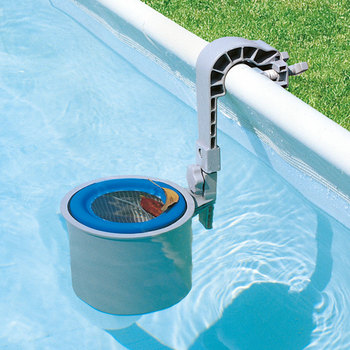
|
|
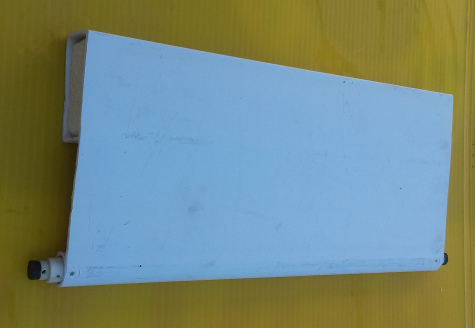
|
|
Figure 3: Skimmer for an Above-Ground Pool
|
|
Figure 4: Weir Flap / Weir Blade / Weir Gate
|
|
|
|
|
Most inground pools have one or more weirs, i.e. openings in the side
at the surface level. Each weir should have a flap (also called a
blade or gate), so that it draws water from the thinnest possible
surface layer, not from the whole depth of the weir.
The model shown in figure 4 has a spring-loaded
hinge pin, so it can be used in a wide variety of settings, even if
the weir was not originally designed to have a flap.
- Automatic pool cleaner.
I am perfectly happy with the classic Kreepy Krauly. It’s cheaper
than most, reasonably effective, and easy to use.
- Manual vacuum.
The Kreepy sometimes doesn’t pick up leaves as quickly and thoroughly
as you might wish. If you want to catch every last leaf, the manual
vacuum is the quickest way to do it. Also, there are sometimes twigs
and other things that no automatic vacuum will ever catch. Some
places, such as steps, will always have to be cleaned manually.
- Leaf catcher filter cannister.
This goes in series with the vacuum hose, downstream of the Kreepy or
the manual vacuum, and upstream of the pump.
- Manual skimmer net.
I find it useful to have two of these things. Sometimes when you get
in the pool there is a lot of leaves and krud on the surface, and you
want a team effort to get rid of it before you swim.
- Steel-bristle wire brush.
A 12-inch width is about right. Bigger is not better.
- Pole.
Beware! If there are power lines anywhere near the pool, make sure
you cannot possibly come near the wires with a metal pole. This is a
good way to get killed.
In theory, you can use the same pole for the vacuum head, wire brush,
and skimmer. However, I find it more convenient to have multiple
poles. An adjustable telescoping pole does not confer much of an
advantage; a plain old one-piece pole is sturdier. One permanently
short pole plus one permanently long pole works better than two
telescoping poles.
- Air pump and air stone.
It really helps to aerate the pool.
Beware that when the back pressure goes up, the flow rate goes down.
For example, a pump that is nominally rated 1300 GPH “and” 5.22 psi
should really be rated 1300 GPH or 5.22 psi. With this pump, if
you try to pump air to a depth of 10 feet, very little air will make
it. On the other hand, if you only want to go down 6 feet, the air
flow will be rather substantial.
‘
You can get a 12” long sintered air stone from aquarium supply shops
for a couple of bucks.
- Several five-gallon buckets.
- A couple of clear plastic measuring cups, in the 250 mL / 1 cup
size, marked in both metric and US customary units.
13 Useless Distractions
There is a long-running pointless controversy as to whether phosphorus
is worth worrying about. The usual not-very-smart not-very-helpful
argument goes like this:
|
Minimize Phosphate
|
|
Don’t Bother
|
|
It is easy to reduce the amount of phosphate to very low
levels. This stands in contrast to the other macronutrients
(nitrogen and potassium) which cannot be eliminated.
|
|
If you
maintain a proper chlorination level, it will kill algae and
pathogens, and you don’t care about the phosphate or lack thereof.
|
|
The advantage of low phosphate is that if you ever make a
mistake with the chorination, algae cannot grow very fast in the
absence of phosphate.
|
|
You still need to maintain proper
chlorination, to kill pathogens. Algae is not your only concern. So
the best advice is, don’t make mistakes with the chlorination.
|
|
If you go on vacation for 9 days, and on the last day the
chlorine level gets a little bit low, there might be pathogens in the
pool, but you don’t care, because you’re not swimming in it. When you
return, restore the chlorine to a proper level and hold it there for a
couple of hours before swimming.
|
|
|
One huge problem with that argument is that you need to worry about
cyanobacteria, not just pathogens and algae.
See section 11.3.
14 References
-
-
Chemgeek
“Chlorine/CYA Chart”
https://www.troublefreepool.com/threads/2177-Chlorine-CYA-Chart -
John Denker,
“Questions and Conjectures about Swimming Pool Chemistry
and Swimming Pool Care”
www.av8n.com/physics/pool-chemistry.htm -
APSP
“Common Interferences in Pool and Spa Water Testing”
http://www.apsp.org/Portals/0/2016 Website Changes/Fact Sheets/FS Common Interferences in Pool and Spa Water Testing FINAL.pdf
-
Danial L. Harp
“Current Technology of Chlorine Analysis for Water and Wastewater”
Technical Information Series – Booklet No.17
https://www.hach.com/cms-portals/hach_com/cms/documents/pdf/LIT/L7019-ChlorineAnalysis.pdf
